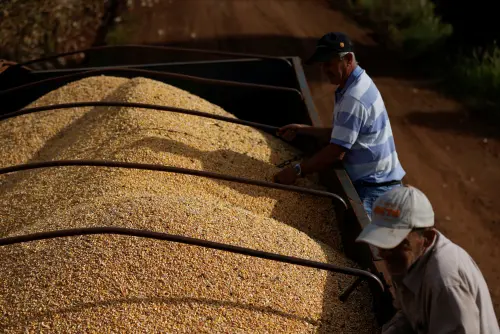NAPERVILLE, Illinois, March 13 (Reuters) - Recent data from Brazil's statistical agency reveals that the country's corn supplies hit a quarter-century low a few weeks ago. However, the U.S. Department of Agriculture anticipates that a similar scenario will not occur until early next year.
The ongoing disparity in estimates between the USDA and Conab is not new, especially following last year's controversies surrounding their diverging assessments of Brazil's soybean and corn harvests.
On a broader scale, the reason for the discrepancies is clear. Variations in production and demand assessments between the USDA and Conab lead to differing outlooks across the balance sheet, indicating that there may not be a definitive "correct" answer.
Amidst the comparison of available world corn supplies against demand later this year, it may be valuable to delve into the trends in Brazil.
Before delving into forecasts, it is crucial to note the relevant time frames. While Conab's corn marketing year in Brazil concludes on January 31, 2026, the USDA's concludes one month later. This annual cycle plays out within the USDA's world corn balance sheet, reflecting an aggregation of local marketing years, spanning several months.
Unlike the treatment of the global soybean ledger by USDA, where they shift market years for Brazil and Argentina, the Brazilian marketing year from March to February influences the USDA's world corn balance sheet.
Recent data shows that Conab increased the 2024-25 corn crop slightly, while the USDA adjusted the 2023-24 harvest downward. These modifications have narrowed the gap in corn output estimates between the two agencies, with USDA holding a higher estimate than Conab.
Despite the potential convergence of figures, historical data shows USDA consistently reporting higher production numbers than Conab over the past four years.
Conab's current data indicates tight corn supplies, whereas USDA foresees a similar situation a year from now.
The discrepancy in Brazilian corn stocks for the ending years, as per Conab and USDA, suggests that tight supply conditions may persist, sparking concerns within the market and placing pressure on future crops to meet demand.
(The opinions presented are expressed by the author, a market analyst for Reuters)
